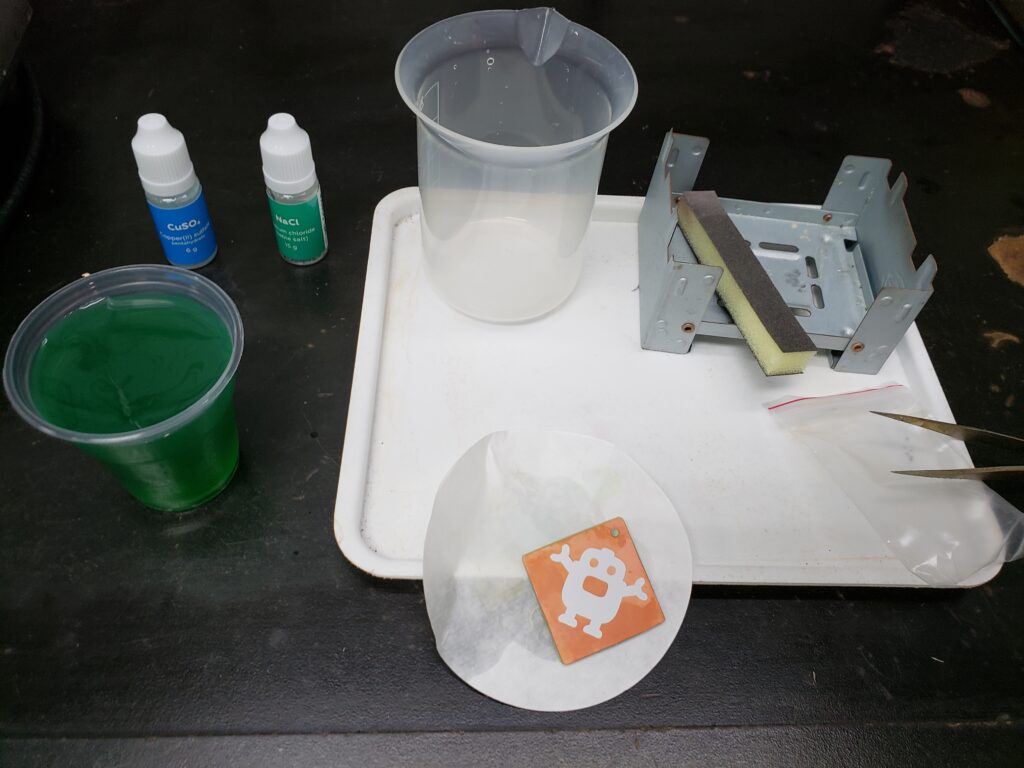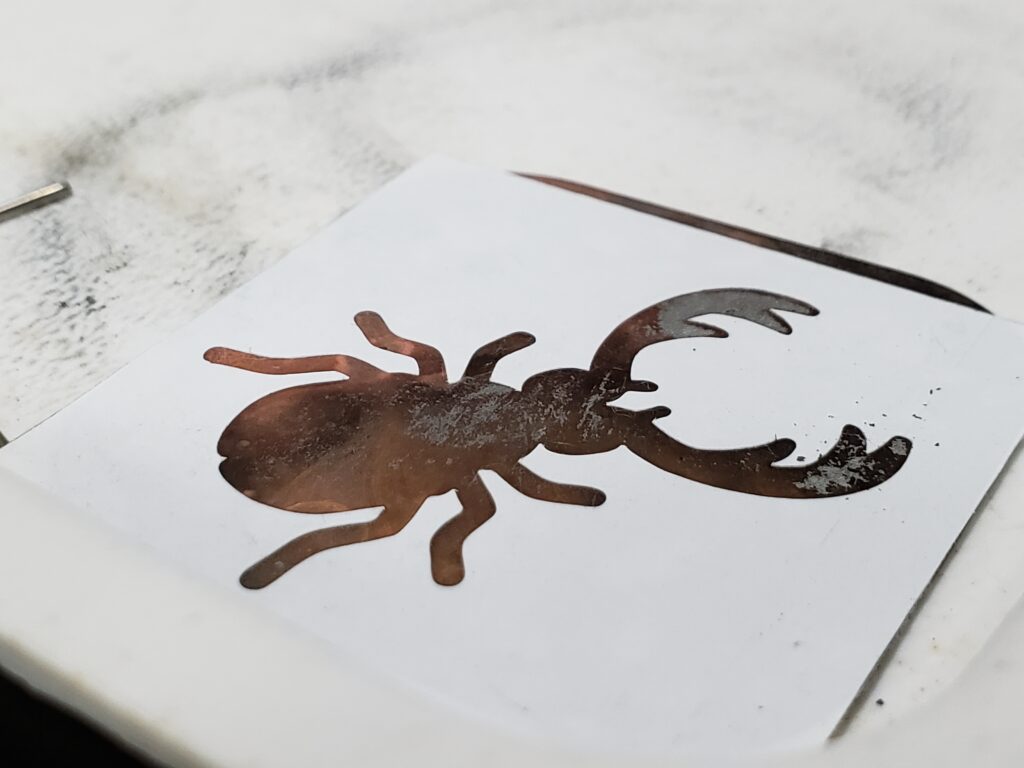
The next set of experiments in the Mel Science kits explores etching and plating of metal. I thought the experiments in the kit were intuitive and fun, though the etching experiments turned out to work quite a bit better than the plating ones (since I didn’t really see rainbow colors after heating).
The copper etching experiment works because the copper is converted from an unprotected metallic Cu to Cu with 1+ valence state, which is easily washed away from the underlying “plastic”. This reaction occurs when the plated copper board is placed in solution containing NaCl, CuSO4 and boiling H2O. The copper can be prevented from etching off with stickers or any organic/inorganic material that covers the Cu surface.

The valence state is also responsible, in a way, for the effects to be explored in the Rainbow plating experiment (though in my view the plating might have worked too well!—more on this in another post or update). Upon heating over a fire, the Cu could transition from 2+ (in CuO) state to 1+ state (Cu2O), and this is actually related to the observed color differences seen in the videos.

Above’s a link to videos for this kit’s experiments. As with the discussion on Tin, Copper is a well known elemental material (number 29) on the periodic table, and was written about in the text 天工開物.
凡銅供世用。出山與出爐。止有赤銅…等藥制煉為青銅。
From 五金第十四.銅
Historically copper has played an immensely important role in global history, in the Bronze Age (青銅時期) which dates to at least 3000 B.C. Copper had to be mined, extracted and then smelted with other elements to form bronze. The dopant or mixture utilized in the smelt process can alter significantly the bronze color and texture, from orange red to blue green!
In China, archaeological excavations of sites from the Bronze Age have yielded numerous items and artifacts used for dining, decoration and music. Many of these items are on display and can be found in museums, such as at the National Palace Museum or Museum of the Institute of History at the Academia Sinica.